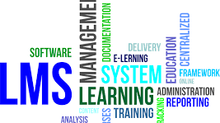Navigation in eLearning
- Dylan Hedges
- Jul 11, 2019
- 3 min read
Navigation in eLearning is one of the most crucial elements when designing and developing digital training for your learners. Clear navigation can help make your eLearning course easier to interact with and improve the overall learning experience, however navigation that is not clear or can not easily be seen can make the course hard to navigate and can be frustrating for the learner resulting in them not understanding the learning concepts you are trying to teach.
Implementing effective navigation in your eLearning can be tricky as it often needs to be intuitive and consistent for a wide variety of learners, below are some things you can do to ensure you implement effective navigation when developing your eLearning course.
1. Make it easy to see
Depending on your audience knowing where the next button is and how to proceed may not be obvious, learners have different levels of understanding when it comes to using technology so it is important that you make sure your navigation buttons are easy to see and learners know what they have to click on. Colours and size are both contributing factors when it comes to this if the navigation buttons are too small learners will have a hard time finding the buttons, if the navigation buttons are too similar to nearby colours it may blend in and be difficult to see. When deciding on navigation ensure that it is easily visible and obvious to the learner, but at the same time make sure it doesn’t distract the learner from the key elements on the page.
2. Apply consistency
Ensuring that specific types of buttons are acting consistently when clicked may seem obvious but it is an important thing to consider when deciding on the navigation for your eLearning. When a learner takes your eLearning course it is important that consistency is applied, for example if a learner uses a next button situated in the bottom right hand corner to proceed to the next page and then the button suddenly shifts the top right of the screen they will be looking for a button that is no longer there, this will result in confusion and frustration for the learner as they will not know how to proceed. When implementing navigation buttons try to ensure they are always located in the same area of the screen and are always the same size and colour, this was the learner will become familiar with the course and have a better learning experience.
3. Make sure it works on a variety of platforms
Modem day eLearning is now taken on a variety of devices, previously eLearning use to just be taken on a PC however now it is taken on a wide variety of devices including laptops, tablets and smartphones. As a result of this it can impact your navigation and where you place your buttons. Due to the difference in screen sizes between devices where you place navigation on one device may not work on another. For example, a laptop has a far bigger screen size than a smartphone which means there is much more space for navigation elements, however when you look at it on a smartphone you notice the screen is cluttered and hard to interact with. When deciding on layouts most authoring tools used to develop eLearning now have the ability to see what your course looks like on a variety of devices, using this can help you determine the best layout for each device.































Comments